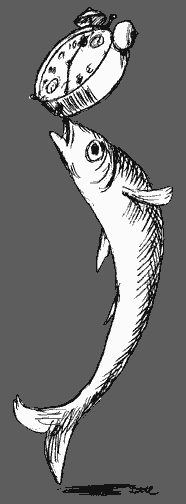The Unconscious
Surrealism attempts to retrieve images from the unconscious; thanks to depth psychology we know that
unconscious thought determines who we are to a much greater extent than
conscious thought, and that it is not advisable to ignore this.
But what does it mean, to retrieve images from the
unconscious? How is this supposed to happen?
We are all familiar with images from the unconscious, from
myths and fairy tales, and from dreams.
They are not realistic images but fantasies, strange, unreal, confusing, beyond our grasp.
And they rely on symbols: memorable and compelling shapes and objects.
Myths and fairy tales tell us about gods, giants, kings, paradise and the underworld.
In a dream I once walked with Stalin from Moscow to Paris.
The Surrealist uses all of these things as stylistic devices:
strong symbols, combinations of objects that don’t
belong together, strangeness, novel shapes, questioning
the familiar by undermining and fracturing it, ignoring
spatial reality.
Here is the recipe:
paint existing and non-existent objects as exactly and with as much plasticity as possible.
Combine them as incongruously as possible and put them into a space where they don’t belong.
It’s that simple?
In principle, yes.
But something is missing there:
Don’t make it too easy for yourself.
